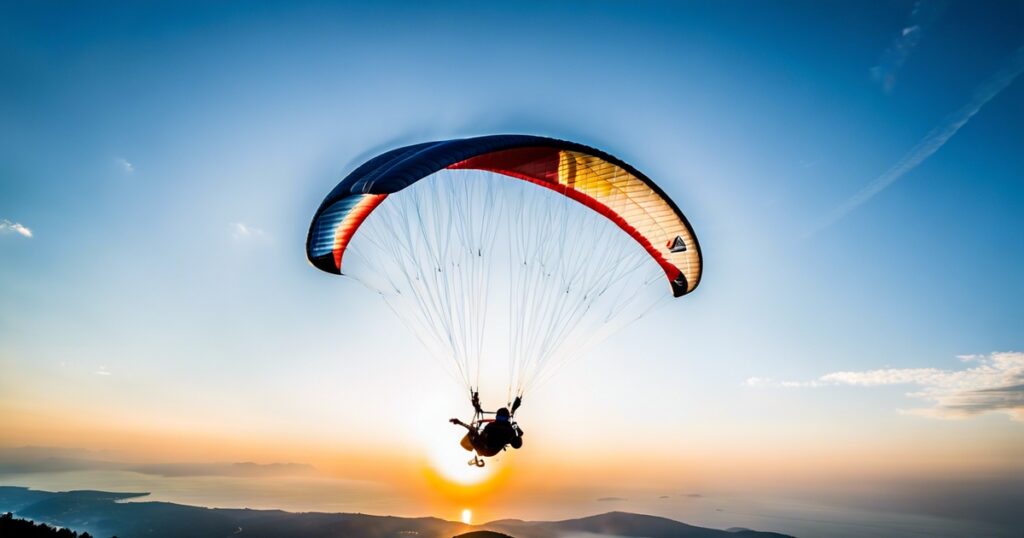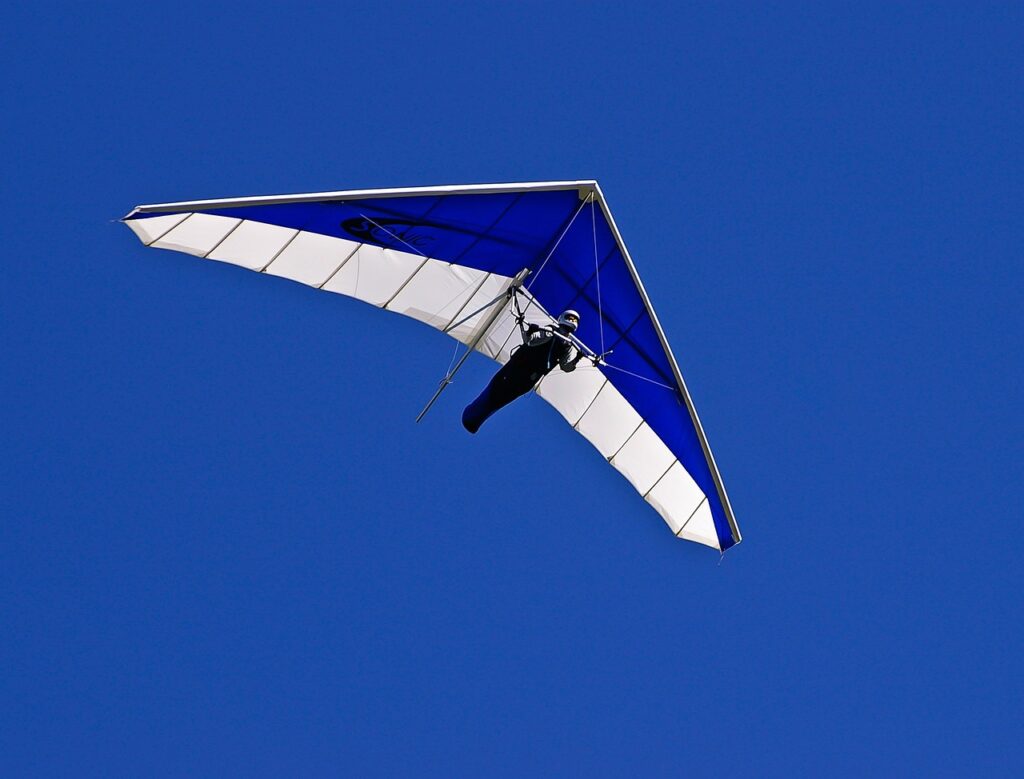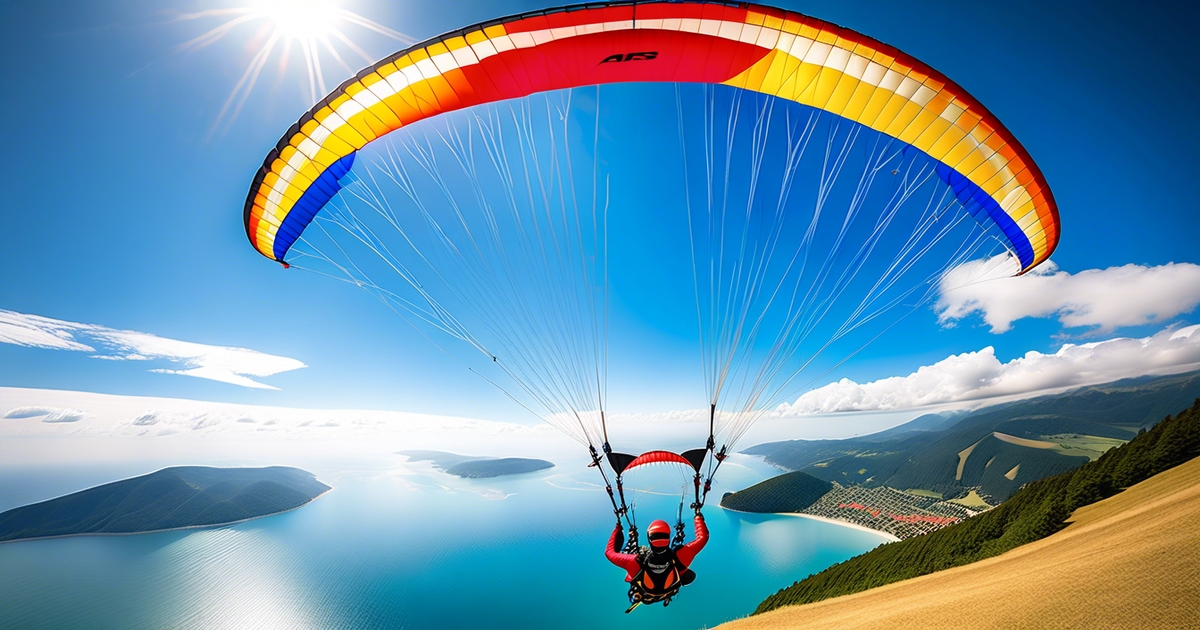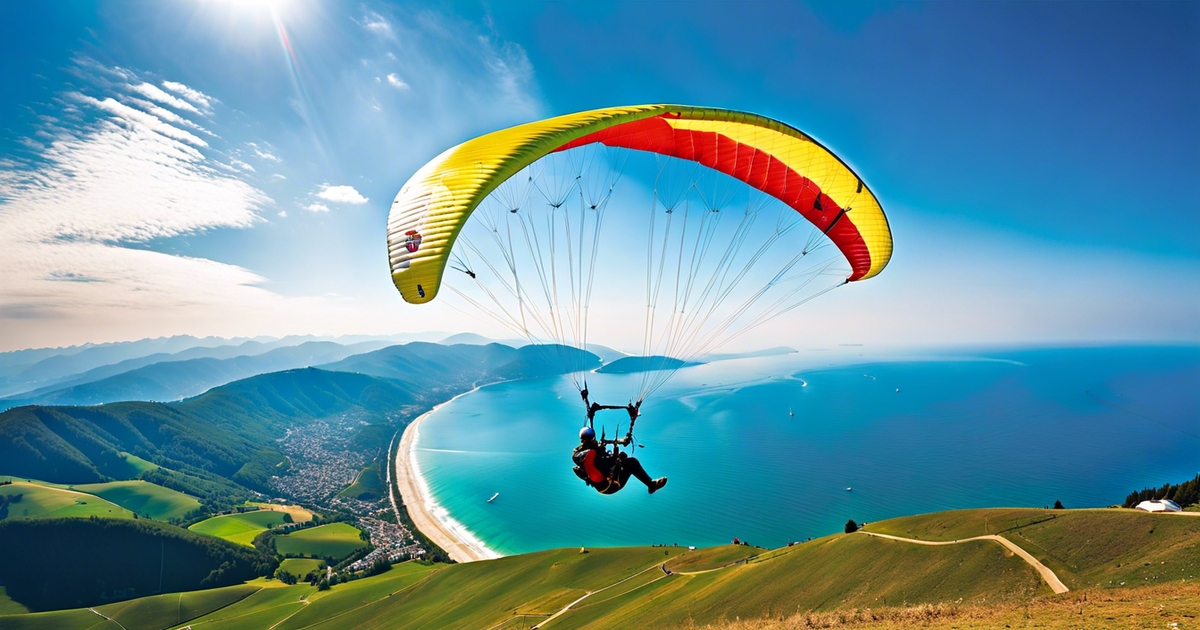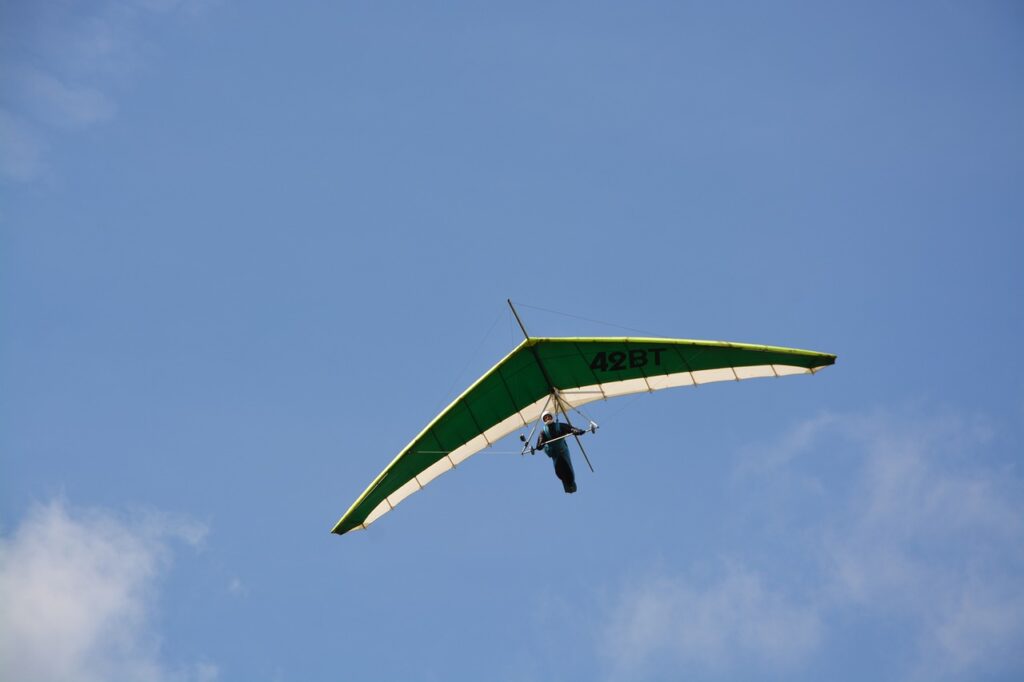Ever wondered which air sport offers the ultimate adrenaline rush – paragliding vs hang gliding? These two thrilling activities, hang gliding and paragliding, may seem similar at first glance, but each has its unique charm and appeal. While paragliding lets you soar like a bird with a free-flying, lightweight wing, hang gliding, also known as hang gliding, provides a more structured experience with a rigid frame and control bar, highlighting the difference in glider types. Both hang gliding and paragliding offer breathtaking views and an unmatched sense of freedom as you glide through the sky. Are you ready to take the plunge and experience the exhilaration of flying high?
Key Takeaways: Paragliding vs Hang Gliding
- Understand the fundamental differences between paragliding and hang gliding to make an informed decision.
- Consider the equipment specifications of each sport to determine which aligns better with your preferences and needs.
- The thrill and training required for paragliding and hang gliding vary, so choose based on your comfort level and desired intensity.
- Prioritize safety by evaluating the safety measures and availability of training programs for both activities.
- When deciding between paragliding and hang gliding, factor in personal preferences, goals, and the overall experience you seek.
- Research and explore various destinations that cater to paragliding or hang gliding to enhance your flying experience.
Discovering the Basics
Key Differences
Paragliding involves sitting in a harness below a fabric wing, while hang gliding requires lying on a frame below a triangular wing.
Both sports use different types of wings; paragliders use inflatable wings, while hang gliders have rigid wings made of aluminum or carbon fiber.
Mechanics and Experiences
Paragliding relies on warm air currents to stay aloft, providing a peaceful and scenic experience for enthusiasts.
In contrast, hang gliding involves launching from elevated locations and steering using weight shifts, offering a more dynamic and thrilling flight experience.
Safety Considerations
- Paragliding is generally considered safer due to its slower speed and easier landings.
- Hang gliding offers faster speeds and higher altitudes, increasing the thrill but also the risk factor.
Equipment Specs Compared
Design Features
Hang gliders are typically designed with a rigid frame made of aluminum or composite materials, supporting a sailcloth wing. This design allows for better gliding performance and stability in windy conditions. On the other hand, paragliders have a flexible wing structure that resembles a parachute, offering greater maneuverability and ease of transport due to their compact size.
Paragliders feature a harness suspended below the wing, providing a comfortable seating position for the pilot during flight. In contrast, hang gliders require pilots to assume a prone position on a horizontal bar, which offers a more aerodynamic posture but can be less comfortable during long flights.
Equipment Specifics
Hang gliding equipment includes a harness, control bar, cables, and a sailcloth wing. The harness attaches the pilot to the glider, while the control bar enables steering by shifting weight and changing the angle of attack. Cables connect the control bar to the wing, allowing for precise control of the glider’s movements.
Paragliding gear consists of a harness, risers, lines, and a fabric wing. The harness secures the pilot to the wing, while risers connect the lines to the pilot’s harness. Lines are used to control the wing’s shape and orientation during flight, influencing speed and direction.
Impact on Experience
The differences in equipment design between hang gliders and paragliders significantly impact the flying experience. Hang gliders’ rigid frames provide stability and speed, making them ideal for soaring long distances and riding thermals efficiently. Conversely, paragliders’ flexibility allows for easy takeoff from various terrains and smoother landings.
Hang gliding’s prone position offers a more streamlined flight experience, reducing air resistance and enhancing speed capabilities. In comparison, paragliding’s seated position provides pilots with better visibility and comfort during extended flights.
Thrill and Training
Adrenaline Rush
Hang gliding offers an exhilarating experience, allowing participants to soar through the sky like a bird. The feeling of freedom and weightlessness is unmatched in any other sport. The adrenaline rush from launching off a cliff and riding thermal currents is truly addictive.
On the other hand, paragliding provides a unique sense of tranquility combined with excitement. Gliding through the air with only a canopy above you gives a peaceful sensation, contrasting with the thrill of maneuvering through the sky. The gentle take-off and landing contribute to a more serene experience.
Training Requirements
For hang gliding, beginners typically undergo extensive training to master the art of controlling the hang glider. Learning to launch, steer, and land safely requires dedication and practice. Hang gliding lessons cover essential skills such as understanding wind patterns, harness usage, and emergency procedures.
In comparison, paragliding lessons focus on teaching students how to control the paraglider using brake toggles. Pilots learn to navigate thermals, perform acrobatics, and execute advanced maneuvers. The learning curve for paragliding is generally considered less steep than that of hang gliding due to its simpler equipment and techniques.
Thrill Factor
The thrill factor in hang gliding activities lies in the speed and agility of the craft. Pilots can reach high speeds and perform daring maneuvers, making it a favorite among adrenaline junkies. The feeling of soaring through the air with the wind rushing past you is incomparable.
Conversely, paragliding activities offer a more relaxed but equally thrilling experience. Pilots can stay airborne for hours, riding thermals and taking in breathtaking views from above. The calmness of paragliding combined with moments of excitement when performing tricks creates a perfect balance for enthusiasts.
Safety and Availability
Training Facilities
Paragliding and hang gliding both prioritize safety through rigorous training programs. Instructors teach participants about equipment handling, weather conditions, and emergency procedures.
Training for paragliding typically includes ground handling practice, tandem flights, and solo flights under supervision. On the other hand, hang gliding training involves learning to control the wing, launching techniques, and landing procedures.
Safety Measures
Safety measures are paramount in both paragliding and hang gliding to minimize accidents. Pilots must regularly inspect their equipment for any signs of wear or damage. They should adhere to weight limits specified for each type of glider.
Ensuring proper weather conditions is crucial for a safe flight. Pilots need to be aware of wind speed, direction, and turbulence before taking off. Furthermore, maintaining a safe distance from other gliders in the air is essential to prevent collisions.
Availability of Locations
Paragliding and hang gliding offer enthusiasts various opportunities to experience these sports worldwide. Popular locations include Interlaken in Switzerland, Queenstown in New Zealand, and Oludeniz in Turkey.
In these locations, enthusiasts can find specialized schools and training centers that cater to all skill levels. These facilities provide equipment rental services, certified instructors, and guided flights for beginners.
Cost and Prices
When considering paragliding or hang gliding, it’s essential to factor in the costs associated with each sport. Paragliding tends to be more affordable due to lower equipment costs and easier transportation of gear.
On the other hand, hang gliding equipment is typically more expensive, but prices can vary based on the quality of materials used. Training costs may differ between the two sports depending on location and instructor expertise.
Making Your Choice
Preferences
Consider your preferences when choosing between paragliding and hang gliding. Are you more inclined towards a slower, more relaxed flight experience or an adrenaline-pumping adventure? Think about whether you prefer sitting or lying down during the flight.
Skill Level
Evaluate your skill level before making a decision. Paragliding is generally considered easier to learn due to its simpler equipment and takeoff techniques. On the other hand, hang gliding requires more technical skills for takeoff and landing.
Thrill-Seeking Nature
Assess your thrill-seeking nature when deciding between paragliding and hang gliding. Paragliding offers a gentler flying experience, suitable for those looking for a calmer aerial activity. In contrast, hang gliding provides a more intense and dynamic flying experience, perfect for thrill-seekers.
Weight Distribution
Understand the weight distribution aspect of both sports. In paragliding, the pilot is suspended beneath a fabric wing, while in hang gliding, the pilot is on top of a rigid wing. This difference affects how weight is distributed during flight.
Flying Position
Consider the flying position in paragliding and hang gliding. In paragliding, pilots are seated in a harness, offering a comfortable and relaxed flying position. Conversely, hang gliders fly in a prone position, which may appeal to those seeking a more aerodynamic experience.
Global Popularity
Explore the global popularity of paragliding and hang gliding. While both sports have a significant following worldwide, paragliding tends to be more prevalent due to its accessibility and ease of learning. Hang gliding enthusiasts often appreciate the technical challenges it presents.
Decision-Making Process
When making your choice between paragliding and hang gliding, consider all these factors carefully. Reflect on your personal preferences, desired flying experience, and comfort level with technical aspects. Ultimately, choose the sport that aligns best with your interests and goals.
Finding Destinations
Paragliding Destinations
Paragliding enthusiasts can explore a myriad of breathtaking destinations worldwide. Nepal stands out as a favorite spot, offering stunning views of the Himalayas. Switzerland is another top choice, with its picturesque landscapes and well-established paragliding infrastructure.
Hang Gliding Locations
Hang gliders seeking adrenaline-pumping adventures have various locations to choose from. California’s Big Sur coastline provides an exhilarating experience with its rugged cliffs and ocean views. Queenstown, New Zealand, known as the “Adventure Capital of the World,” offers fantastic opportunities for hang gliding.
Paragliding and hang gliding share some common destinations that cater to both sports. Interlaken, Switzerland, is a hotspot for both activities, attracting thrill-seekers with its stunning alpine scenery and favorable wind conditions. Oludeniz, Turkey, is another popular destination that accommodates both paragliders and hang gliders, boasting turquoise waters and a vibrant coastal atmosphere.
Planning Your Adventure
When planning your next paragliding or hang gliding adventure, consider factors such as weather conditions, safety regulations, and the expertise of local instructors. Researching online forums and travel websites can provide valuable insights into the best destinations for these sports.
- Pros of Paragliding Destinations:
- Diverse landscapes offering unique flying experiences.
- Well-developed infrastructure and support services in popular locations.
- Cons of Hang Gliding Locations:
- Limited accessibility in remote areas.
- Weather-dependent activities that may require flexibility in scheduling.
Exploring different destinations allows enthusiasts to experience diverse terrains and climates while indulging in their passion for flying. Whether soaring over mountain ranges or coastlines, each location offers a distinct adventure for paragliders and hang gliders alike.
Our Recommendation
Beginner-Friendly Sport
Paragliding and hang gliding are both exhilarating sports that offer unique experiences to people seeking adventure in the skies. For beginners, paragliding is often considered more accessible due to its simpler equipment and easier learning curve.
Equipment Variations
When it comes to equipment, paragliding involves a lightweight polyester wing that allows for easy transportation and setup. On the other hand, hang gliding utilizes a more rigid structure with an aluminum frame, providing better control but requiring more effort to transport.
Best Locations for Flying
For those looking to explore the best paragliding spots, destinations like Interlaken in Switzerland or Oludeniz in Turkey offer breathtaking views and ideal conditions for soaring through the skies. On the other hand, hang gliding enthusiasts might prefer locations like Kitty Hawk in North Carolina or Queenstown in New Zealand for their diverse landscapes and wind patterns.
Starting Your Journey
If you’re eager to embark on a paragliding adventure, consider taking lessons from certified instructors to ensure your safety and learn proper techniques. Similarly, for hang gliding, finding a reputable school that provides hands-on training and guidance is crucial for a successful start.
Closing Thoughts
After comparing paragliding and hang gliding in detail, you now have a clearer understanding of the differences between these exhilarating sports. Your choice between the two will depend on your preferences, skills, and the level of thrill you seek. Remember to prioritize safety above all else when making your decision.
Now that you have all the facts, it’s time to take the leap (literally!) and embark on your aerial adventure. Whether you choose the freedom of paragliding or the speed of hang gliding, both sports offer unique experiences that will leave you craving more. So, gather your gear, find a suitable location, and get ready to soar through the skies like never before!
Frequently Asked Questions
What are the main differences between paragliding and hang gliding?
Paragliding involves sitting in a harness below a fabric wing, while hang gliding uses a rigid frame with a sailcloth to glide. Paragliders are more portable and easier to learn, whereas hang gliders offer better performance in terms of speed and distance.
Is paragliding or hang gliding safer?
Both activities are relatively safe when proper training and precautions are followed. However, statistically, paragliding has a slightly higher accident rate than hang gliding due to factors like pilot error and weather conditions.
Which one is more accessible for beginners – paragliding or hang gliding?
Paragliding is generally considered more beginner-friendly as it requires less physical strength and training compared to hang gliding. The learning curve for paragliding is typically shorter, making it more accessible for newcomers to the sport.
Can I try both paragliding and hang gliding during the same session?
While it’s not common to switch between paragliding and hang gliding in a single session due to the different equipment and techniques involved, some specialized schools may offer combined introductory courses where you can experience both activities.
Are there specific destinations that cater to both paragliding and hang gliding enthusiasts?
Yes, there are several popular destinations worldwide that offer opportunities for both paragliding and hang gliding. Some renowned locations include Interlaken in Switzerland, Oludeniz in Turkey, Queenstown in New Zealand, and Torrey Pines in California.

